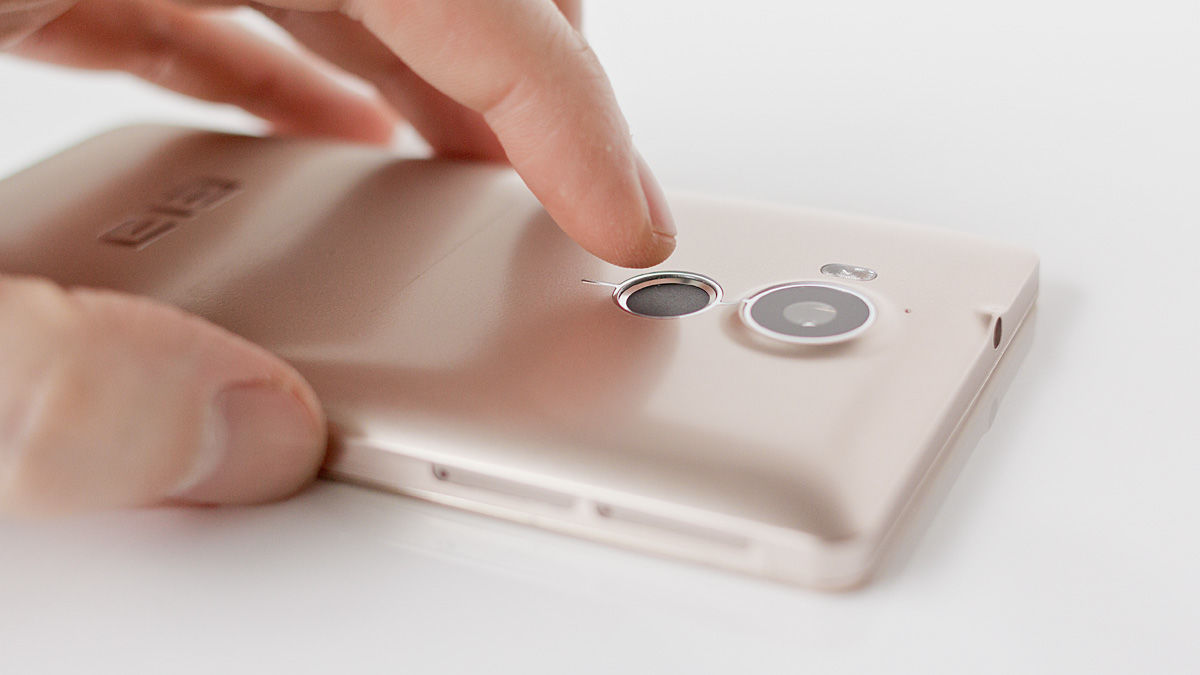Also see: Best Black Friday Phone Deals A 5.5in pin-sharp Quad HD screen, MediaTek’s beefy octa-core Helio X10 processor, a healthy 4GB complement of RAM, 32GB of storage (with built-in microSD support up to 128GB), a fingerprint scanner, a whopping 20.7Mp camera, a huge 4,000mAh battery and dual-SIM support with both slots able to connect to 4G networks. At £235 (from GearBest, although read our advice on grey market tech before you buy), the Elephone Vowney sounds too good to be true. Also see: Best MiFi 2016. And in some respects it is. Despite all the premium hardware inside, the Vowney looks plasticky and cheap. That huge battery is good only for a day’s juice thanks to the power-guzzling super-high-resolution screen and meaty processor. The camera isn’t quite as great as you’d expect. And as for 4G dual-SIM- and microSD support, it’s either or. But the Elephone Vowney still offers excellent value for money. It has a mid-range sub-£250 price, yet packs a brilliant screen, a meaty processor and, although the camera might not be what we’d consider ‘21Mp great’, it’s pretty great for the money. So what if we have to choose between microSD and 4G dual-SIM? At least we get a choice, which is more than we can say with most phones officially sold in the UK. And we appreciate the fingerprint scanner and, interestingly for a Chinese phone housing a MediaTek chip, NFC rather than HotKnot connectivity. Let’s take a closer look at the Elephone Vowney. Also see: Best budget smartphones 2016.
Elephone Vowney review: Build quality
Of all the Chinese phones that have passed through the doors of PCA Towers, this is the first to be fitted with a Quad-HD (1440×2560) screen. We usually see these affordable handsets fitted with HD screens – occassionally full-HD, but never Quad-HD. For many users, HD is HD, but if you’ll be watching photos or videos (even those captured on the device itself, since it’s capable of both 4K and slo-mo video) you should know this screen is pin-sharp with excellent viewing angles, very good brightness and realistic colours; 5.5in on the diagonal, it’s an ideal size for playing back multimedia, too. Also see: Best cheap 4G phones 2016. It’s not flawless: a black border frames the Vowney’s screen on all edges, and the high resolution places quite a strain on the battery. And other areas of the Vowney’s build let it down, too. While the Elephone feels sturdy enough, the only signs of a premium build are its high-res screen and two flashes of a metal frame on the left- and right edges. The casing is otherwise plastic, with a glossy finish that attracts fingerprints and scratches and makes our sickly gold sample look incredibly cheap. (It’s possible that the black version is better-looking, but we couldn’t comment on that having not seen it.) Also offending our eyes at the rear is a headphone jack pimple – a raised bump around the 3.5mm socket where Elephone has rounded the edges of the phone for comfort in the hand but in doing so made it too thin for the jack to sit comfortably – and a raised camera. The sensor is large, and with a black fingerprint scanner below it you get the effect of two big black boils on this phone’s greasy golden skin. Even worse is the metal strip that surrounds and connects the two: at a glance it looks as though the cheap plastic has cracked and, worse, around the camera it feels rough and sharp. See all budget smartphone reviews. Our photographer has done an amazing job, admittedly. Don’t let us put you off, though. There’s an easy fix for all this: invest in a case. Seriously, though, this smartphone might not be our cup of tea in terms of its design, but in other areas it’s truly impressive. And there are a few pleasant surprises in its build, such as the speaker grille being found at the bottom and not the back, where you’ll also find a Micro-USB charging port – we’ve never understood why so many Chinese phones place it at the top, since charging feels so much more natural from the phone’s base. We can’t hold it against Elephone that it’s fitted a Micro-USB port rather than a futureproof reversible USB-C connection. Although the latter is preferable, at a time when people don’t tend to have any USB-C accessories or spare cables lying around it can be an inconvenience. It’s exactly like the problem Apple users face: who has stolen their Lightning cable this time? Also see: Best Android phones 2016. Given the plastic case, we’re surprised to find Elephone didn’t make the rear removable and allow users access to the battery. Although it sounds great on paper, rated at 4,000mAh, with a high-resolution screen and a powerful processor inside you shouldn’t expect the Vowney to go on any longer than a day. We personally prefer to use a power bank to top up the juice when away from home, but many users would have appreciated the ability to alternatively swap in a spare. With no access to the internals, the SIMs or SIM and microSD card are slotted in using two trays on the phone’s left edge. When you pull out these trays they look as though they both take Micro-SIMs; in fact one is a Micro-SIM slot and the other can accommodate either a Nano-SIM or a MicroSD card up to 128GB in capacity. As we mentioned, we’d rather not have to choose between the two, but at least we do get to make that choice. Also see: Best Chinese phones 2016.
Elephone Vowney review: Core hardware & performance
It’s in the core hardware where the Elephone Vowney really stands out. It’s got an octa-core Helio X10 chip with 4GB of RAM and PowerVR G6200 graphics. But while we were pleased with its performance in our benchmarks, it’s real-world usage that counts – so it’s good to be able to say that the Vowney feels incredibly fluid in use. Apps launch quickly (yes, even the camera), navigation is instantaneous… the Vowney makes you wait for nothing. That said, we use benchmarks because they allow us to more accurately compare our subjective opinions on smartphone performance, and you can compare the results of all the phones we’ve recently tested in our article What’s the fastest smartphone 2016? In the Geekbench 3 and AnTuTu processing performance benchmarks the Vowney impressed, notching up a high 3,299- and 49,842 points respectively. The fact that its 16fps score in GFXBench 3’s T-Rex graphics test – and 6.3fps in Manhattan – is not higher is very likely down to the screen resolution. Again, this phone does not feel slow in use. Usually we would also run the JetStream JavaScript benchmark, although the Elephone failed to complete it. To obtain a point of reference we instead ran the no longer supported SunSpider test, and the Elephone’s 997ms (in Google Chrome) really isn’t bad for an Android phone at this price point. Also see: Best phablets 2016. The one benchmark that failed to impress us was the Geekbench 3 battery test, in which the Vowney recorded 4 hours 44 minutes. That’s not what we’d expect to see from a phone with such a high-capacity battery but, as we mentioned earlier, it does have a very high-res screen and powerful hardware inside. The battery supports neither wireless- or fast charging. Also see: What is Qualcomm Quick Charge 3.0? For storage there’s 32GB built in, of which around 26GB is available, plus you can fit a microSD card up to 128GB – as long as you don’t want to use the Vowney’s dual-SIM connectivity. Also see: Best dual-SIM phones 2016 and dual-SIM phones buying advice.
Elephone Vowney review: Connectivity
And on that note, it’s great to see that both SIM slots on this phone will connect to a 4G network. With support for FDD-LTE 800-, 1800-, 2100- and 2600MHz bands all UK 4G networks should be covered, but if you’re unsure or buying elsewhere also see our advice on how to tell whether a phone is supported by your network. NFC is the other surprise in this phone’s specification. Before now, the great majority of phones running MediaTek processors will feature HotKnot, which is compatible with only MediaTek phones, or nothing at all. NFC is something that isn’t perhaps a big deal today, since we’re still waiting for Android Pay to come to the UK, but it’s likely to become a bigger deal in future. Also see: What is NFC? You’ll find the other usual suspects present and correct, with support for GPS, Bluetooth 4.0, USB OTG and 802.11a/b/g/n Wi-Fi.
Elephone Vowney review: Cameras
The camera is, on paper, a key selling point of the Elephone Vowney. At the rear it is fitted with a 20.7Mp Sony Exmor RS IMX230, which has a dual-LED flash and boasts of a phase-detection autofocus, 4K video recording and 120fps slo-mo video. We couldn’t find a way to access 4K recording, and on its High setting the camera shot video at 1920×1088 pixels. It’s possible this will be added as an update later. Also see: Best phone camera 2016. A swipe in from the left lets you access real-time filters for Blackboard, Negative, Whiteboard, Posterize, Mono, Aqua and Sepia, and you get the usual options such as Panorama, Motion Track and Live Photo within the Camera app. Face beauty mode supports one- or multiple faces, and there are toggles for face detection, gesture shot, smile shot and the like. Our test shots, as you can see below, are crisp and full of detail, but when zoomed in to actual size there are still signs of compression. You can see our standard test shots of St Pancras International below, first with auto settings and secondly in HDR mode (click to view at 100 percent).
The Elephone Vowney is also fitted with an 8Mp selfie camera, which has the same software controls as the primary camera.
Elephone Vowney review: Software
There’s really very little to say on the software front, since the Elephone is running a stock version of Android 5.1 Lollipop (read our full Android Lollipop review here). An Elephone Mobile app is preinstalled, which is in essence a user forum, but otherwise you’ll find nothing unusual. Read next: Best new phones coming in 2016. Follow Marie Brewis on Twitter. Marie is Editor in Chief of Tech Advisor and Macworld. A Journalism graduate from the London College of Printing, she’s worked in tech media for more than 17 years, managing our English language, French and Spanish consumer editorial teams and leading on content strategy through Foundry’s transition from print, to digital, to online - and beyond.







